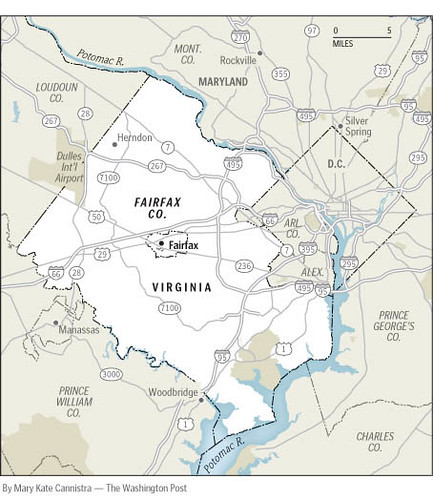Cities (!) (?)
It's not news (e.g., this Post article from 2007, "Growth Cooling in D.C. Suburbs, Census Data Show") that given the housing crash, center cities in strong real estate markets are seeing population increases. See today's AP story "Census: Big cities now growing quicker: Housing crunch, recession and gas prices have slowed migration to suburbs."
From the article:
"Cities are showing a continued vitality as hubs of activity even as some suburban and exurban areas go through tough times," said William H. Frey, a demographer at the Brookings Institution. "It emphasizes the buoyancy of large established cities with diverse economies and populations." ...
Transit helps growth
Robert E. Lang, co-director of the Metropolitan Institute at Virginia Tech, predicted that upscale, inner suburbs with developed transit systems will see bigger gains in the future. He noted that while far-flung exurbs have been steadily losing population, closer-in Virginia suburbs such as Arlington and Alexandria just outside Washington, D.C., jumped 3 percent and 2.9 percent in 2008, respectively, to rank among the 20 fastest-growing cities.
"In Arlington and Alexandria, we're seeing hints of a new growth model," Lang said, citing changing demographics in which there are fewer U.S. households with kids. "These were places that were losing population. But they tore down the shopping malls, developed the transit system and put up apartment housing to accommodate singles and childless couples," he said. "They're a decade ahead of Lakewood, Colo., Tempe, Ariz., and other Sunbelt regions that now have transit."
That being said, the housing market in relatively strong center city markets has still declined, especially for multiunit condominium and/or apartment buildings, and there are still plenty of foreclosures in cities. And the center cities need to continue to improve their offer as well, in order to remain competitive with other in-region locations that also enjoy high demand and some of the same positive market conditions.
But in terms of holding value, cities, especially if they are on the coasts, or have other market strengthening aspects (i.e., being the state capital) are increasingly able to hold their own.
Also see:
-- "Leinberger at Urban Land Institute" (Philadelphia Business Journal) about the book, Option of Urbanism
-- Who Lives Downtown? (Brookings)
-- Get Urban!
So it is interesting, that Fairfax County is thinking "urban" according to today's Washington Post article, "Fairfax Executive Suggests Dropping 'County'," that the County is thinking of reorganizing its government as a city. This would change its relationship with the state. Virginia has a "weird" law where cities and counties are legally separate entities. (This by the way makes it impossible for sharing sales tax revenues across jurisdictions, which is something that kills Petersburg in relation to Colonial Heights and the county in its part of Virginia south of Richmond.) City residents, such as in Fairfax City, pay city taxes and vote for elected officials for the city, but they do not vote for County officials or pay County taxes. (It's different in Maryland.)
From the article:
It might not be known for its nightlife or cosmopolitan flair, but Fairfax County Executive Anthony H. Griffin suggested yesterday that it might be time for his urbanizing community to become a full-fledged city.
Griffin told the Board of Supervisors that city status would allow Fairfax greater autonomy over taxes and transportation. But it would also turn the tables on the nearby capital city: With 1 million residents, a new Fairfax City would dwarf the District of Columbia, which has fewer than 600,000. (Set aside for a moment that the county already surrounds a smaller Fairfax City.)
But Fairfax County is big, just about 400 square miles. In fact, DC's population of about 600,000 is on 61 square miles of land, while Fairfax has slightly over 1 million residents, who are vastly more spread out.

Washington Post graphic.
So as an urban county-city in Virginia, Fairfax would be more modeled after Houston, Texas (600 square miles) than Arlington (23 square miles) or Alexandria (15 square miles). Richmond is 60 square miles and Virginia Beach is 248 square miles. However, two cities, Chesapeake and Suffolk, merged into their respective counties, so the county is a city, technically, and they are 341 and 400 square miles respectively, close to the size of Virginia's Fairfax County.
(Note that when I do commercial district revitalization framework planning in other places, which tend to be small, I think often that the local city and the county should merge, such as how Louisville and Lexington Kentucky have merged with their respective counties, and how Pittsburgh should merge with Allegheny County. On the other hand, I can see the value of having local and responsive government too, i.e., places like Mount Rainier and Hyattsville in Prince George's County get their trash picked up, the streets plowed quickly when it snows, and more responsive and quicker policing...)
Labels: historic preservation, housing, municipal government, progressive urban political agenda, urban design/placemaking, urban revitalization



0 Comments:
Post a Comment
<< Home